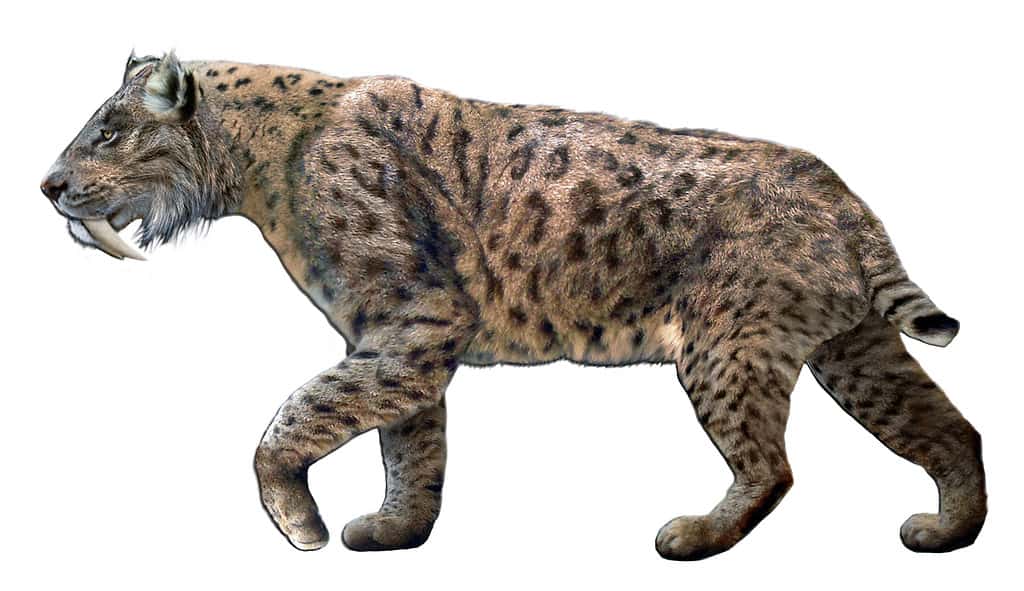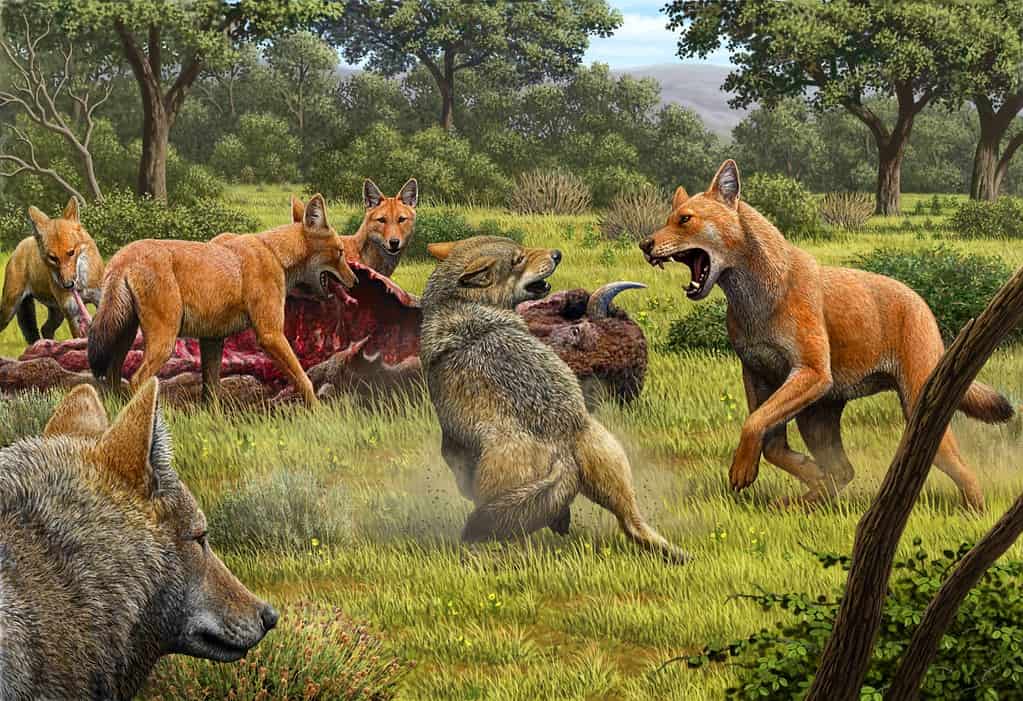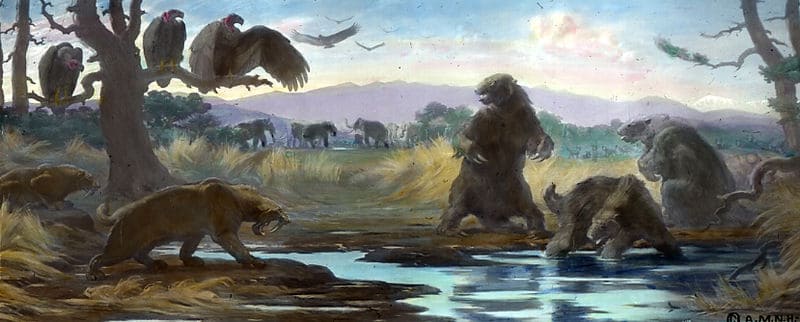
The majestic saber-toothed cats and fierce dire wolves that once roamed our planet during the last Ice Age faced a formidable enemy as the climate shifted and the giant ice sheets melted: bone disease.
A recent study suggests that these iconic predators were afflicted by a condition known as osteochondrosis, a common developmental bone disease that impacts joint health.
These findings shed light on the challenges faced by these ancient creatures and draw intriguing parallels to the bone diseases we observe in our domesticated cats and dogs today. But the study also raises an important question: could bone disease have played a role in their ultimate demise?
The painful secrets of ancient bones
In the heart of Los Angeles, California, lies the La Brea Tar Pits, a renowned fossil site where researchers have unearthed a wealth of information about the ancient creatures that once roamed the region. With their remarkable capacity for fossil preservation, these tar pits serve as natural time capsules, preserving the remains of ancient organisms over thousands of years.
In this study, scientists meticulously examined over 1,000 limb bones of saber-toothed cats and over 500 limb bones of dire wolves from La Brea Tar Pits, dating from approximately 55,000 to 12,000 years ago. The bones revealed new information about the prevalence and nature of bone disease in these ancient predators.

The team of researchers discovered small defects consistent with osteochondrosis in the knee and shoulder joints of these extinct predators. Among the limb bones of young adult and juvenile saber-toothed cats, approximately six percent exhibited bone deformities smaller than seven millimeters. Similarly, around three percent of young adult and juvenile dire wolves showed defects in the knee joints, with sizes exceeding 12 millimeters.
Dr. Hugo Schmökel, a veterinary orthopedic surgeon and co-author of the study, notes that previous researchers had noticed these defects but had not realized they might have occurred before the animals’ deaths. Now, this discovery adds a new layer to our understanding of the challenges faced by these magnificent predators.
“While developmental skeletal diseases like osteochondrosis are well documented as markers of health in domestic animals, fewer studies have examined the extent to which they affect wild animals, even in captivity,” said Schmökel, a researcher at the Evidensia Academy in Sweden.
“Radiographic examination of living wild animals is costly; and, to our knowledge, only a few institutions house wildlife skeletal postcranial collections large enough to permit reconstructing the prevalence of osteochondrosis or other developmental skeletal disorders in a population.”

But like any good research, the study also prompts further questions. For instance, researchers wonder if these joint difficulties hampered the hunting abilities of saber-toothed cats and dire wolves. To gain a more comprehensive understanding, future studies should explore additional fossil sites and examine patterns in the prevalence of this disease. These patterns could potentially reveal more about the lives and struggles of these predators.
Inbreeding and disease
The high incidence of osteochondrosis among fossilized animals may serve as a sign of population decline as they neared extinction. Osteochondrosis is frequently observed in some modern domestic dogs, particularly those that have been heavily inbred. The researchers speculate that the same genetic factors contributing to bone disease in domesticated dogs could have affected these ancient predators, exacerbating their population decline.
Despite the passage of thousands of years, it’s intriguing to contemplate how saber-toothed cats and dire wolves, large predators that braved harsh environments and ultimately went extinct, shared the same common ailments with the cats and dogs that reside in our homes today.
The findings appeared in the journal PLOS ONE.









